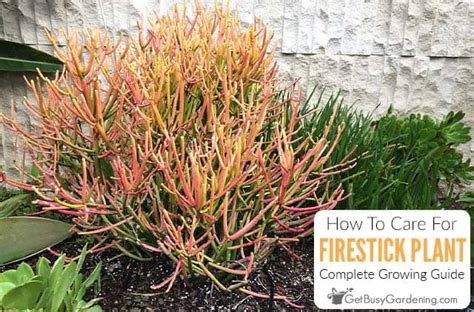The Sticks of Fire plant, also known by its scientific name, Euphorbia tirucalli, is a fascinating and unique specimen that has garnered significant attention for its striking appearance and intriguing characteristics. Native to tropical and subtropical regions, this plant has adapted to thrive in arid environments, making it a captivating subject for botanists, horticulturists, and enthusiasts alike.
One of the most distinctive features of the Sticks of Fire plant is its stem, which is devoid of leaves, thereby reducing transpiration and conserving water. This adaptation allows the plant to survive and even flourish in areas with minimal rainfall. The stem itself takes on a reddish-orange hue, particularly during the dry season or when exposed to full sun, giving the plant its striking, fiery appearance. This coloration is not merely aesthetic; it plays a crucial role in the plant’s defenses, deterring herbivores that might otherwise feed on its photosynthetic tissues.
Despite its seemingly bare appearance, the Sticks of Fire plant is highly efficient in its photosynthetic processes. The stems are covered in tiny, spine-like protrusions that are actually modified leaves, known as rudimentary leaves or spines. These spines not only contribute to the plant’s defense mechanism but also house chloroplasts, allowing for some level of photosynthesis to occur directly on the stem. This unique adaptation enables the plant to maximize its energy production while minimizing water loss, a testament to its remarkable evolutionary strategies.
Historical and Cultural Significance
The Sticks of Fire plant has been of interest to humans for centuries, not only for its unusual appearance but also for its medicinal and cultural significance. In traditional medicine, various parts of the plant have been used to treat a range of ailments, from skin conditions to respiratory issues. However, it’s crucial to approach such uses with caution, as the plant’s sap contains toxic compounds that can cause severe irritation and other adverse effects if not handled properly.
In some cultures, the plant is esteemed for its supposed metaphysical properties, believed to offer protection or to ward off negative influences. Its unique, architectural shape has also made it a popular choice for ornamental gardens, where it can thrive with proper care, adding a touch of the exotic and the bizarre to landscapes.
Cultivation and Care
For those interested in cultivating the Sticks of Fire plant, it’s essential to replicate its natural habitat as closely as possible. This involves providing full sun to partial shade, depending on the climate, and ensuring the soil is well-draining to prevent root rot. Watering should be sparing, as the plant is highly susceptible to overwatering, which can lead to a rapid decline in health.
Fertilization should be minimal, as the plant is adapted to survive in nutrient-poor soils. Pruning is necessary to maintain shape and promote healthy growth, but it must be done carefully, as the sap can cause skin irritation and other allergic reactions. Gloves and protective eyewear are recommended when handling the plant.
Propagation
Propagation of the Sticks of Fire plant can be achieved through stem cuttings, which should be taken during the warmer months when the plant is most actively growing. The cut ends should be allowed to dry for a day or two to form a callus, which helps prevent rotting when the cutting is planted. A well-draining potting mix and warm conditions will encourage rooting.
Conclusion
The Sticks of Fire plant, with its eerie, fiery stems and its adaptability to harsh environments, stands as a testament to the incredible diversity and resilience of life on Earth. Its unique characteristics, both visually striking and functionally efficient, make it a subject of fascination for scientists and garden enthusiasts alike. As we continue to explore and understand more about this intriguing plant, we are reminded of the importance of preserving biodiversity and respecting the intricate balance of ecosystems, from which such remarkable species evolve and thrive.
FAQs
What are the main adaptations of the Sticks of Fire plant for survival in arid environments?
+The Sticks of Fire plant has adapted to survive in arid environments through several key strategies, including the reduction of leaves to minimize water loss, the ability to perform photosynthesis directly through its stems, and the production of a toxic sap that deters herbivores.
How do I properly care for a Sticks of Fire plant in a home garden?
+To properly care for a Sticks of Fire plant, ensure it receives full sun to partial shade, water sparingly to avoid root rot, and fertilize minimally. The soil should be well-draining, and the plant should be pruned carefully to maintain shape and promote healthy growth, taking precautions to avoid the toxic sap.
What are the potential risks or considerations when handling the Sticks of Fire plant?
+The Sticks of Fire plant contains toxic compounds in its sap, which can cause severe skin irritation, allergic reactions, and other adverse effects. When handling the plant, it's essential to wear protective gear, including gloves and eyewear, and to wash hands thoroughly afterward.
In conclusion, the Sticks of Fire plant is a remarkable species that not only captures our imagination with its striking appearance but also teaches us valuable lessons about adaptation, resilience, and the importance of respecting and preserving the natural world. Whether you’re a seasoned botanist, an enthusiastic gardener, or simply someone fascinated by the wonders of nature, this plant is sure to inspire a deeper appreciation for the intricate and often surprising ways in which life thrives on our planet.



